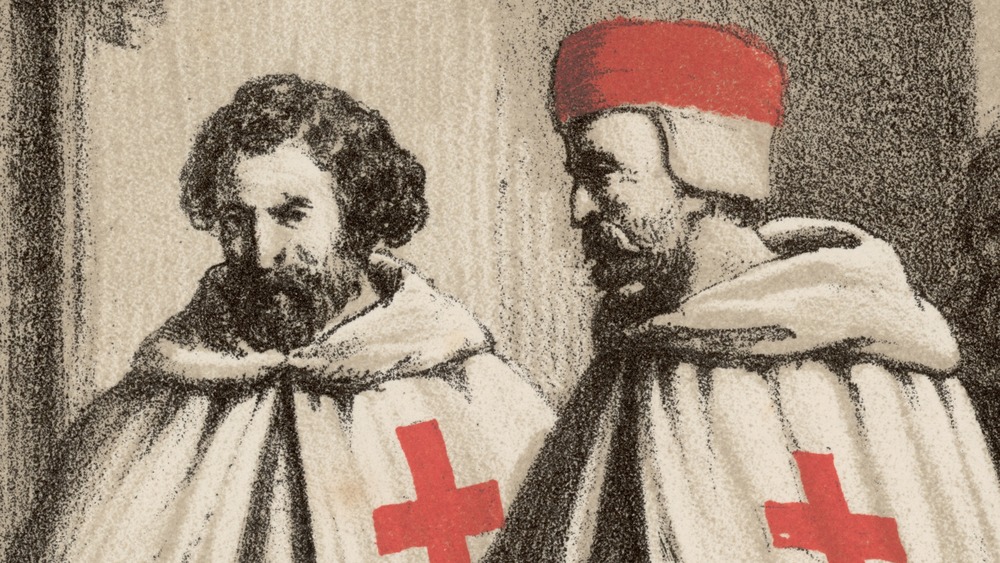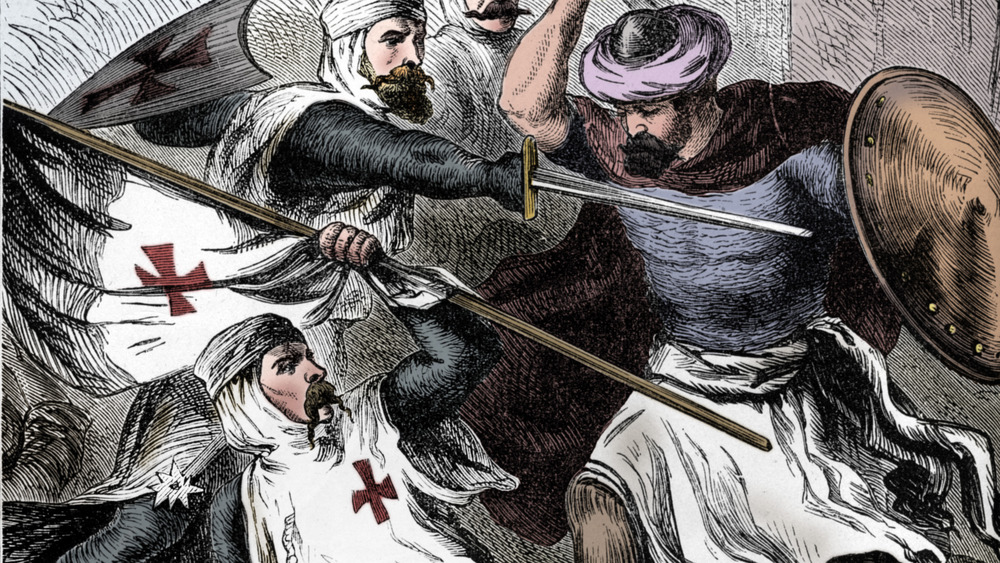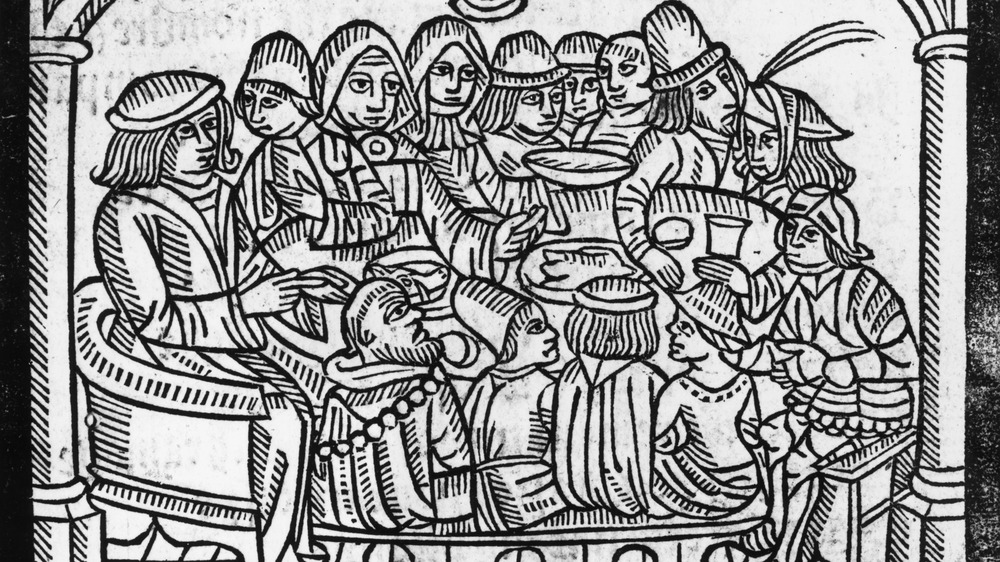The Reason The Knights Templar Was Formed
The Knights Templar are probably one of the most famous of the Crusaders. The group was at one point even considered the wealthiest order of knights during that period. But the Knights Templar weren't formed to fight during the Crusades. The Templars envisioned a far different mission when they first started.
Throughout history, the Knights Templar, or the Poor-Fellow Soldiers of Christ and of the Temple of Solomon, fought famous battles during the Medieval era. History placed the Templars at the Battle of Montgisard in 1177, considered one of the more significant defeats of Saladin's forces. The Templars' various victories allowed the them access to great wealth, and they built several castles throughout Europe.
Their skill both on the battlefield and in banking earned the Templars a fierce reputation. It wasn't until the fall of the sect in 1314 that the Templars disappeared; though a modern version related to the Freemasons exists, they're not related to the medieval Templars.
The Knights Templar was founded by French nobleman Hugh of Payns in 1119 AD, explained World History Encyclopedia. Payns and seven knights under his command had noticed that many pilgrims faced dangerous conditions after the First Crusades. Many Christians saw the opportunity to pay homage to Jesus Christ after Jerusalem was captured. Even though Jerusalem was relatively safe, the roads leading there weren't. Several bandits lay in wait to slaughter pilgrims on their way to the Holy Land. Payns saw this violence and determined that he and his fellow knights must protect pilgrims.
The Templars amassed wealth, power and influence
Payns and the knights under his command established a brotherhood sworn to protect pilgrims. History said Payns approached King Baldwin II of Jerusalem to seek permission for the new sect. The men then took monastic vows; in other words, they vowed to be in service to Christendom and lived together in a small community. By 1120, the king allowed the knights to use a castle on the Temple Mount in Jerusalem as their headquarters. Temple Mount was believed to be the ruins of the Temple of Solomon — hence the Knights Templar took Solomon's name as part of their identity. The Knights Templar did not start rich, but after Pope Innocent II gave them special rights and they found support from prominent French abbot (and later, declared saint) Bernard of Clairvaux, the group began amassing riches from many donors.
Under the pope's special dispensation, the Knights Templar did not have to pay taxes, build their oratories, and most importantly, were accountable to no one but the pope himself. Since they didn't have to pay taxes, the Templars set up their own banks through which pilgrims could deposit their holdings in their home countries and withdraw while they were in the Holy Lands. (Note that the Knights Templar took vows of chastity and poverty, so technically, they couldn't use the money they earned for themselves.)
By the subsequent Crusades, the Templars started to figure into battles to capture the Holy Land more than protecting the pilgrims going there. More importantly, they became bankers.
It was their loans to kings that brought them down
The Templars fought alongside King Richard I (the Lionheart) of England and King Louis VII of France, said The Guardian, and were also instrumental in defeating Saladin in Jerusalem. Their success on the battlefield earned them respect most other knightly orders didn't have. As one of the more disciplined troops, per World History Encyclopedia, the Templars blasted through enemy lines. But commanders often had difficulty controlling them, since they were really hell-bent on winning the battle at all costs.
But more than their fierceness on the battlefield, it was the Templar's prowess in guarding money that made them enemies. The decision to set up banks started as part of their original mission — a way to protect pilgrims. The Guardian said pilgrims would visit a local Templar bank to deposit their belongings before continuing their journey. The travelers were furnished with a letter describing their valuables. This meant that if they were ambushed on the road, there were no possessions for stealing, thus keeping them safe.
Over time, the Knights Templar focused more on growing their vast wealth. The order bought land, built vineyards, and began offering loans to many a kingdom. By the end of the 12th century, distrust of the Templars gained steam. In 1307, France's King Philip IV, who himself owed a lot of money to the sect, ordered the arrest of the Templars in France. It was the beginning of the end for the Knights Templar, all because they expanded their original mission and became too powerful.


